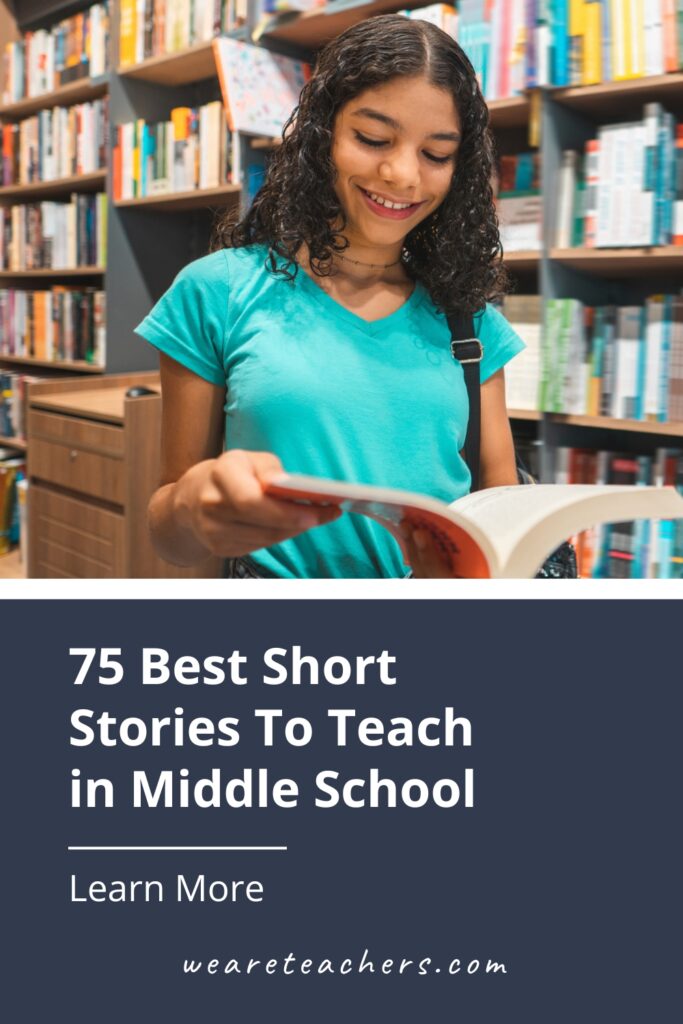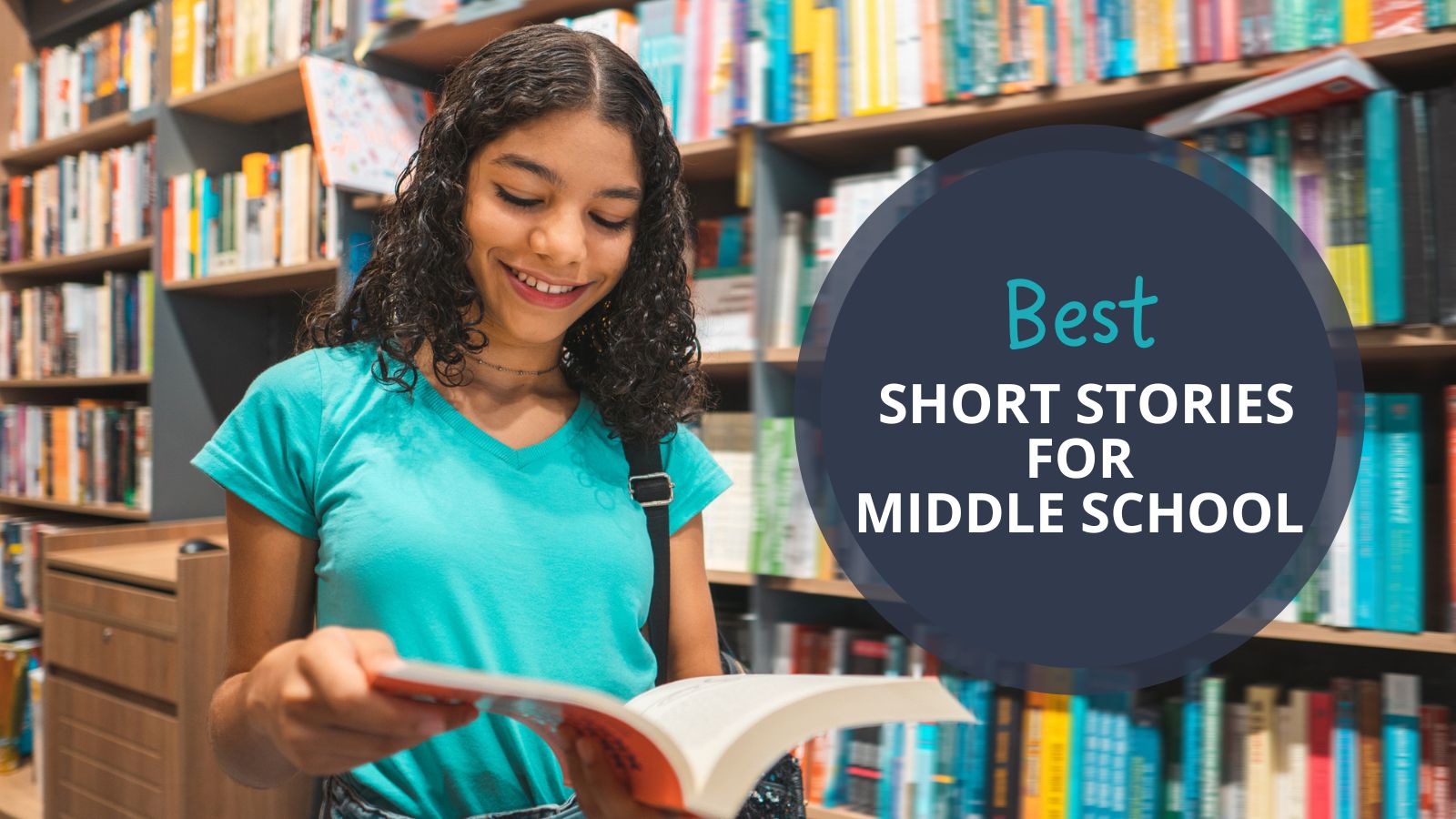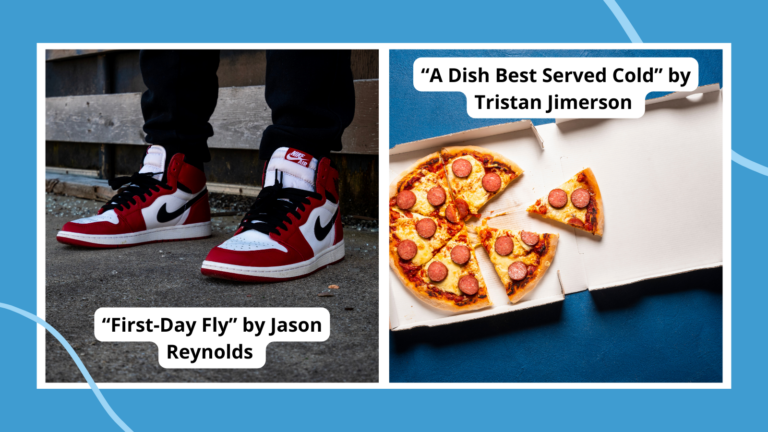Short stories are a perfect teaching tool for middle schoolers. Because they require less time to read, they’re an easy way to expose your students to new authors and genres. Also, between stylistic intricacies and plot twists, short stories hook readers and hold middle schoolers’ attention like nothing else.
We’ve compiled this list of short stories that are great for teaching middle schoolers. Links to each story are included below (they are sometimes scanned reproductions). Always remember to check in advance for typos, and be sure to respect copyright protections. Finally, before you bring these short stories for middle schoolers to your classroom, make sure the material (and whatever twist ending is in store) is previewed and appropriate.
Best Short Stories for Middle Schoolers
1. “Recitatif” by Toni Morrison
“The minute I walked in and the Big Bozo introduced us, I got sick to my stomach. It was one thing to be taken out of your own bed early in the morning—it was something else to be stuck in a strange place with a girl from a whole other race.”
Why I love this: Morrison’s stated goal in this short story, which begins in an orphanage, was to remove “all racial codes from a narrative about two characters of different races for whom racial identity is crucial.” Also, it’s perfect for studying style and spurring conversation.
2. “Stone Animals” by Kelly Link
“Carleton was serious about how he played. Tilly sat on the landing, reading a book, legs poking out through the railings. Whenever Carleton ran past, he thumped her on the head, but Tilly never said a word. Carleton would be sorry later, and never even know why.”
Why I love this: It’s another one of those longer short stories that is so rich with stylistic and narrative elements that it can serve as a short novel unit.
3. “A Sound of Thunder” by Ray Bradbury
“‘Does this safari guarantee I come back alive?’”
“‘We guarantee nothing,’” said the official, ‘except the dinosaurs.’”
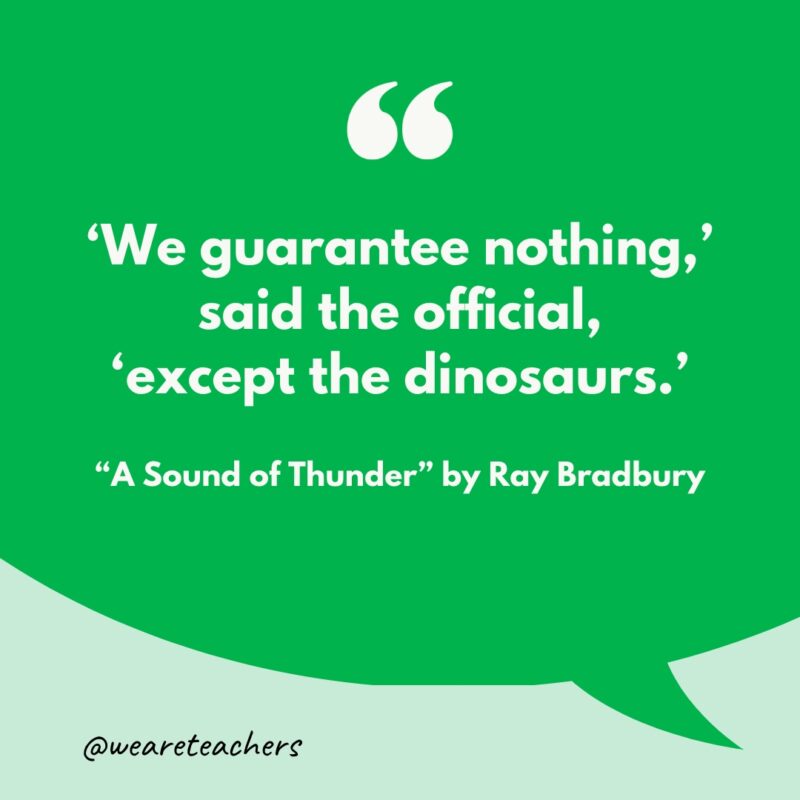
Why I love this: It’s rich with descriptive language and fast-paced, dialogue-heavy action. This story unfolds its terrible tension to reveal a perfect ending.
4. “The Monsters Are Due on Maple Street” by Rod Serling
“Maple Street. 6:44 p.m., on a late September evening. Maple Street in the last calm and reflective moments … before the monsters came!”
Why I love this: Reading a play can be a wonderful classroom management trick. For example, let the talkative kids ham it up, let the quiet kids just follow along, and let the sound-effects kids do their thing.
5. “Hearts and Hands” by O. Henry
“Among the newcomers were two young men, one of handsome presence with a bold, frank countenance and manner; the other a ruffled, glum-faced person, heavily built and roughly dressed. The two were handcuffed together.”
Why I love this: Even though O. Henry’s language can be tough for kids today, “Hearts and Hands” is quick and clear and hits exactly as you want his stories to hit.
6. “The Fir Tree” by Hans Christian Andersen
“And the Wind kissed the Tree, and the Dew wept tears over him; but the Fir understood it not.”
Why I love this: It’s a poetic fairy tale, and it’s great for teaching theme. Expect that short stories like this one will make middle schoolers get mad at you, though.
7. “The Necklace” by Guy de Maupassant
“The sight of the little Breton girl who came to do the work in her little house aroused heart-broken regrets and hopeless dreams in her mind.”
Why I love this: It’s great for honors students and for teaching how to write compelling characterization.
8. “The Story of an Hour” by Kate Chopin
“Knowing that Mrs. Mallard was afflicted with a heart trouble, great care was taken to break to her as gently as possible the news of her husband’s death.”
Why I love this: It’s a perfect anchor text for a discussion assignment.
9. “The Library of Babel” Jorge Luis Borges
“Like all men of the Library, I have traveled in my youth; I have wandered in search of a book, perhaps the catalogue of catalogues; now that my eyes can hardly decipher what I write, I am preparing to die just a few leagues from the hexagon in which I was born.”
Why I love this: Read it with the students, and then dive into magical realism or fantasy.
10. “The Circuit” by Francisco Jiménez
“It was that time of year again. Ito, the strawberry sharecropper, did not smile. It was natural. The peak of the strawberry season was over and the last few days the workers, most of them braceros, were not picking as many boxes as they had during the months of June and July.”

Why I love this: We enjoy doing this as a read-aloud, to lead into reflective writing or discussion.
11. “The Paper Menagerie” by Ken Liu
“I didn’t know this at the time, but Mom’s breath was special. She breathed into her paper animals so that they shared her breath, and thus moved with her life. This was her magic.”
Why I love this: It’s subtle, which makes it exciting for students to discover elements of craft.
12. “Flipped” by Wendelin Van Draanen
“All I’ve ever wanted is for Juli Baker to leave me alone. For her to back off—you know, just give me some space.”
“The first day I met Bryce Loski, I flipped. Honestly, one look at him and I became a lunatic. It’s his eyes. Something in his eyes. They’re blue, and framed in the blackness of his lashes, they’re dazzling. Absolutely breathtaking.”
Why I love this: We can explore how different points of view affect our understanding, and it’s a very accessible text for middle school students.
13. “The Open Window” by H.H. Munro (Saki)
“Framton shivered slightly and turned towards the niece with a look intended to convey sympathetic comprehension. The child was staring out through the open window with dazed horror in her eyes.”
Why I love this: It’s flexible enough for everything from a Halloween read-aloud or a close reading for setting, theme, and characterization.
14. “The Masque of the Red Death” by Edgar Allan Poe
“Before the clock was quiet again, many in the crowd saw that in the first room, the blue room, there was a masquerader who had not been seen before.”
Why I love this: Because Poe should be included in every list of short stories for middle schoolers. Also, Death is a character, and it’s a wonderful example of descriptive writing.
15. “The Ransom of Red Chief” by O. Henry
“We chose for our victim the only child of an influential citizen named Ebenezer Dorset. … The kid was a boy of ten, with bas-relief freckles, and hair the colour of the cover of the magazine you buy at the new-stand. … Bill and me figured that Ebenezer would melt down for a ransom of two thousand dollars to a cent. But wait till I tell you.”
Why I love this: It’s hilarious, because it’s basically Home Alone set in the Old West.
16. “Fixed Income” by Sherman Alexie
“These are desperate times, and I’m not as desperate as a lot of people, but I’m desperate enough to need this job.”
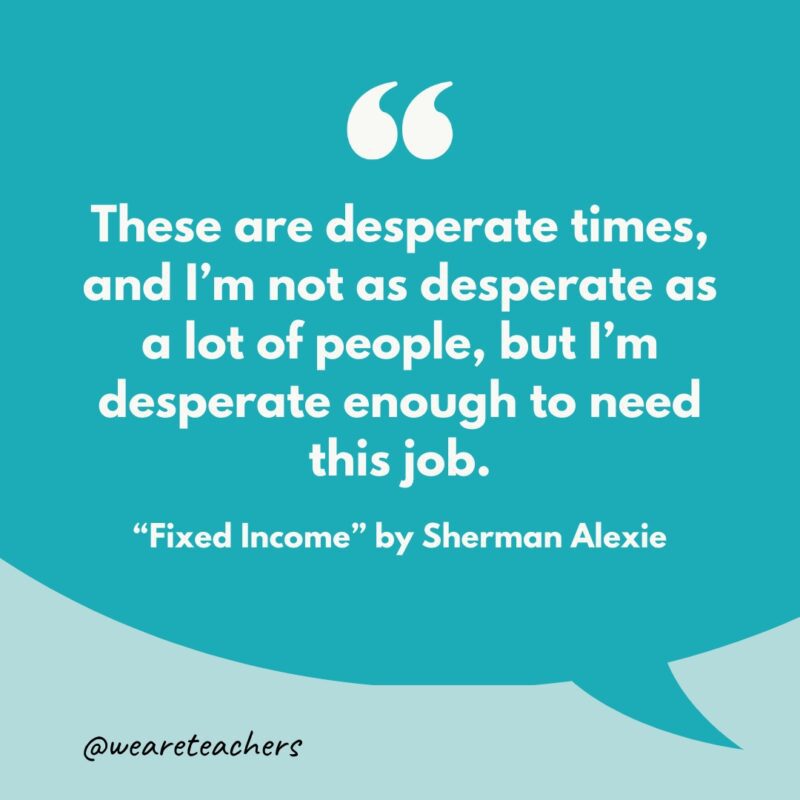
Why I love this: Filled with Alexie’s trademark style, it’s a quick look at the generation gap and perfect for a read-aloud or studying characterization. Like his other story on this list, the text we chose is edited to be more school-appropriate.
17. “The Wife’s Story” by Ursula K. Le Guin
“He was a good husband, a good father. I don’t understand it. I don’t believe in it. I don’t believe that it happened. I saw it happen but it isn’t true. It can’t be.”
Why I love this: We savor the slow realization that the people in the story might not be exactly what they seem.
18. “First-Day Fly” by Jason Reynolds
“How were you supposed to know geometry is apparently more important than your drip? How are you supposed to hear anything Mrs. Montgomery had to say about triangles and diameters and whatever a hypotenuse is when your sneakers are practically bleeding to death?”
Why I love this: It’s an adventurous reflection, rich with details and style.
19. “On the Sidewalk Bleeding” by Evan Hunter
“He lay on the sidewalk, bleeding, and he thought only: That was a fierce rumble. They got me good that time, but he did not know he was dying.”
Why I love this: We learn how it ends right in the beginning. This piques students’ curiosity so they continue to read with attention and curiosity.
20. “The Bet” by Anton Chekhov
“Execution kills instantly, life-imprisonment kills by degrees. Who is the more humane executioner, one who kills you in a few seconds or one who draws the life out of you incessantly, for years?”
Why I love this: It has all the ethical questions of the best Russian novels.
21. “My Favorite Chaperone” by Jean Davies Okimoto
“It’s like that in America. It’s a place where things can change for people, and many people always seem to have hope. At least that’s how it seems to me. Maybe I was beginning to think this way, too, although my hope was very small.”
Why I love this: It’s long enough for a mini-unit, and it’s great for teaching the basics of storytelling and style.
22. “The Treasure of Lemon Brown” by Walter Dean Myers
“Greg thought he heard the noise again. His stomach tightened as he held himself still and listened intently. There weren’t any more scraping noises, but he was sure he had heard something in the darkness—something breathing!”

Why I love this: WDM’s universe is immediately accessible for many middle school kids, and this story gives us a chance to expand the unit into a study of the blues and all the musical genres it inspired, unleashing all kinds of creative project possibilities.
23. “Seventh Grade” by Gary Soto
“On the way to his homeroom, Victor tried a scowl. He felt foolish, until out of the corner of his eye he saw a girl looking at him. Umm, he thought, maybe it does work. He scowled with greater conviction.”
Why I love this: This story captures the middle school experience so well, and Soto always does such a great job integrating diverse voices into his work.
24. “Flowers for Algernon” by Daniel Keyes
“Then I said if I had my glases I coud see better I usally only ware my glases in the movies or TV but I said they are in the closit in the hall. I got them. Then I said let me see that card agen I bet Ill find it now.”
Why I love this: The story of an intellectually disabled man who is temporarily able to blend into “normal” society brings out great questions, even for today’s students.
25. “Everyday Use” by Alice Walker
“In real life I am a large, big-boned woman with rough, man-working hands. In the winter I wear flannel nightgowns to bed and overalls during the day. I can kill and clean a hog as mercilessly as a man.”
Why I love this: If you’re looking for short stories for middle schoolers to teach descriptive characterizations, Walker’s text serves as a wonderful model.
26. “Lamb to the Slaughter” by Roald Dahl
“The room was warm and clean, the curtains drawn, the two table lamps alight. … On the sideboard behind her, two tall glasses, soda water, whiskey. … Mary Maloney was waiting for her husband to come home from work.”
Why I love this: It shakes up kids’ perceptions of Dahl, whom they know from “James and the Giant Peach” and “Charlie and the Chocolate Factory.”
27. “One Friday Morning” by Langston Hughes
“Casually, one day, Miss Dietrich asked Nancy Lee what color frame she thought would be best on her picture. That had been the first inkling.”
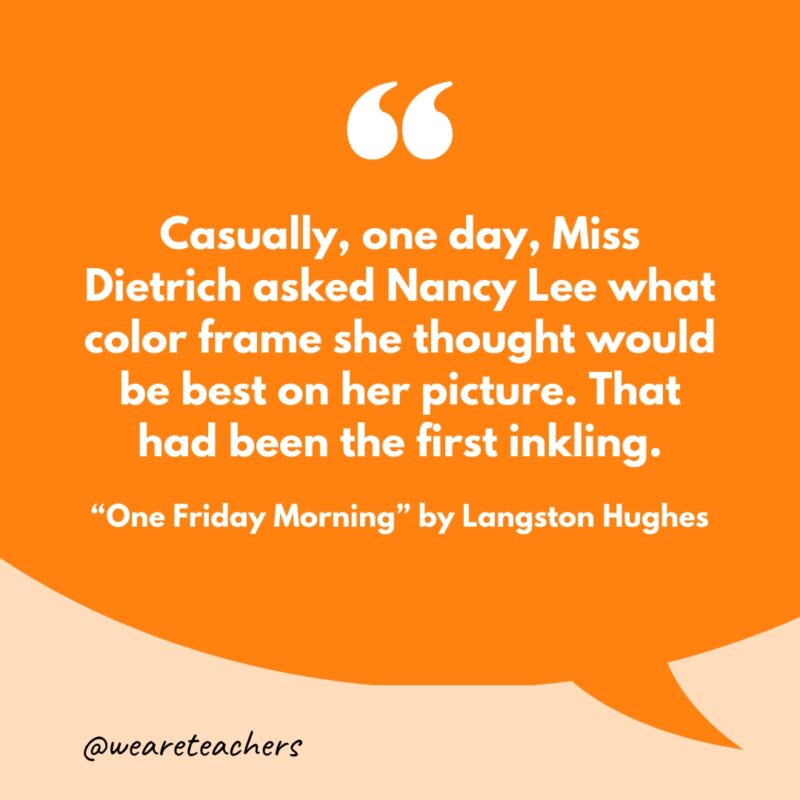
Why I love this: It’s a compelling and troubling story that ends with a note of inspiration, which is what all our students need right now.
28. “A Very Old Man With Enormous Wings” by Gabriel García Márquez
“The light was so weak at noon that when Pelayo was coming back to the house after throwing away the crabs, it was hard for him to see what it was that was moving and groaning in the rear of the courtyard. He had to go very close to see that it was an old man, a very old man, lying face down in the mud, who, in spite of his tremendous efforts, couldn’t get up, impeded by his enormous wings.”
Why I love this: Exploring Márquez’s magical realism is an exciting, eye-opening experience for students.
29. “Charles” by Shirley Jackson
“‘Why did Charles hit the teacher?’ I asked quickly.
‘Because she tried to make him color with red crayons,’ Laurie said. ‘Charles wanted to color with green crayons so he hit the teacher and she spanked him and said nobody play with Charles but everybody did.’”
Why I love this: It validates the experience of students who don’t play by the rules, and it’s still got the perfect twist ending.
30. “Click Clack the Rattlebag” by Neil Gaiman
“We walked along the upper corridor in the shadows, walking from patch of moonlight to patch of moonlight. It really was a big house. I wished I had a flashlight.”
Why I love this: Students simply love it. Period. Gaiman knows how to write for today’s kids, and this story never fails to hold their attention from the drop.
31. “Names/Nombres” by Julia Alvarez
“At the hotel my mother was Missus Alburest, and I was little girl, as in, ‘Hey, little girl, stop riding the elevator up and down. It’s not a toy.’”
Why I love this: It’s less a short story than an anecdotal essay about the words we use to identify one another, especially our loved ones. It’s one of those short stories for middle schoolers that’s perfect for starting the school year.
32. “To Build a Fire” by Jack London
“That was because the sun was absent from the sky. This fact did not worry the man. He was not alarmed by the lack of sun. It had been days since he had seen the sun.”
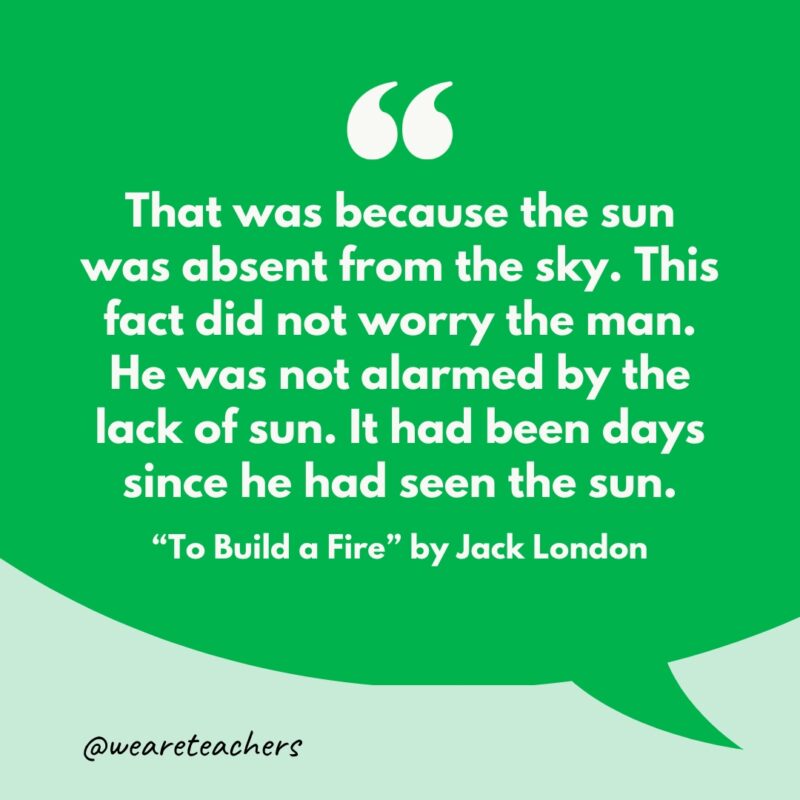
Why I love this: It remains engaging, the pace is perfect for studying plot, and the style is a fun model for narratives.
33. “The Fly” by Katherine Mansfield
“The door shut, the firm heavy steps recrossed the bright carpet, the fat body plumped down in the spring chair, and leaning forward, the boss covered his face with his hands. He wanted, he intended, he had arranged to weep …”
Why I love this: It’s a skillfully written riddle of a short story.
34. “Geraldo No Last Name” by Sandra Cisneros
“She met him at a dance. Pretty too, and young. Said he worked in a restaurant, but she can’t remember which one. Geraldo.”
Why I love this: It’s a great model to show students how to use words both economically and effectively.
35. “Rules of the Game” by Amy Tan
“I was six when my mother taught me the art of invisible strength. It was a strategy for winning arguments, respect from others, and eventually, though neither of us knew it at the time, chess games.”
Why I love this: We use it early in the school year as a subliminal recruitment tool for our chess team.
36. “Liars Don’t Qualify” by Junius Edwards
“Will Harris sat on the bench in the waiting room for another hour. His pride was not the only thing that hurt. He wanted them to call him in and get him registered so he could get out of there.”
Why I love this: It’s a small story about a very big issue, and it’s driven by compelling dialogue.
37. “The Sniper” by Liam O’Flaherty
“On a rooftop near O’Connell Bridge, a Republican sniper lay watching. Beside him lay his rifle and over his shoulders was slung a pair of field glasses. His face was the face of a student, thin and ascetic, but his eyes had the cold gleam of the fanatic.”
Why I love this: The video game generation connects quickly to the setting, and the moral questions are worth talking about.
38. “Civil Peace” by Chinua Achebe
“He had come out of the war with five inestimable blessings—his head, his wife Maria’s head, and the heads of three out of their four children. As a bonus he also had his old bicycle—a miracle too but naturally not to be compared to the safety of five human heads.”
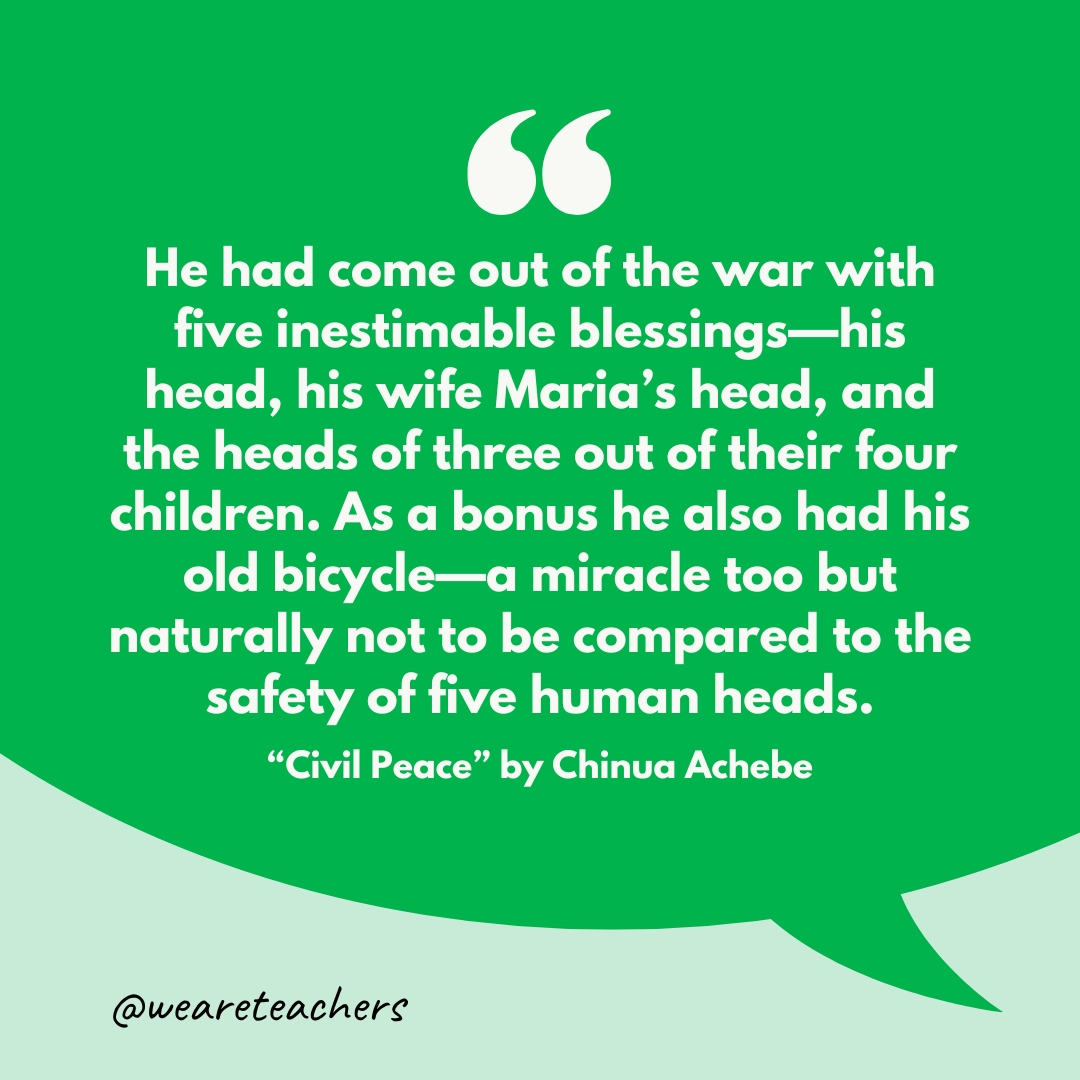
Why I love this: There are opportunities to discuss point of view and theme and to explore countless research topics.
39. “The Friday Everything Changed” by Anne Hart
“Tradition. In Miss Ralston’s class the boys have always carried the water bucket. Until one day, the girls decide it’s time to challenge the rule.”
Why I love this: What better way to empower young world-changers than a short story for middle schoolers about gender roles?
40. “The Scholarship Jacket” by Marta Salinas
“The next day when the principal called me into his office I knew what it would be about. He looked uncomfortable and unhappy. I decided I wasn’t going to make it any easier for him, so I looked him straight in the eyes. He looked away and fidgeted with the papers on his desk.”
Why I love this: The limited first-person perspective of the young narrator provides an interesting window on racial and social politics.
41. “Amigo Brothers” by Piri Thomas
“Antonio was fair, lean, and lanky, while Felix was dark, short, and husky. Antonio’s hair was always falling over his eyes, while Felix wore his black hair in a natural Afro style.”
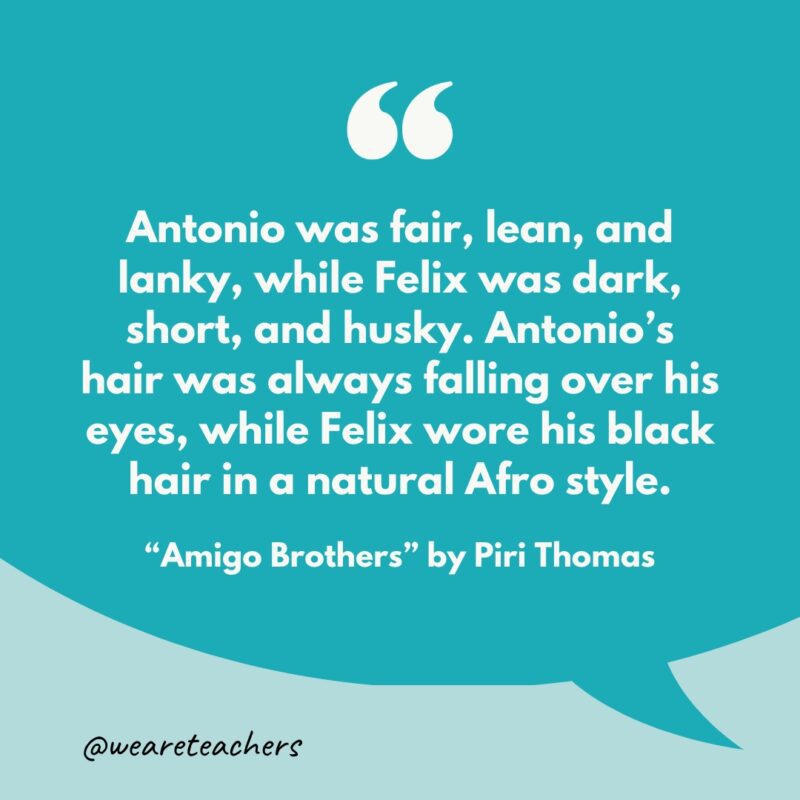
Why I love this: It works as a great extension text if you’re examining sports fiction, buddy stories, ethical questions, or characterization.
42. “And of Clay Are We Created” by Isabel Allende
“In that vast cemetery where the odor of death was already attracting vultures from far away, and where the weeping of orphans and wails of the injured filled the air, the little girl obstinately clinging to life became the symbol of the tragedy.”
Why I love this: Allende does historical fiction like no other.
43. “Hills Like White Elephants” by Ernest Hemingway
“It was very hot and the express from Barcelona would come in forty minutes. It stopped at this junction for two minutes and went on to Madrid.”
Why I love this: Students can analyze craft, bias, and character development.
44. “The Veldt” by Ray Bradbury
“They walked down the hall of their HappyLife Home, which had cost them thirty thousand dollars with everything included. This house which clothed and fed and rocked them to sleep and played and sang and was good to them.”
Why I love this: Every student enjoys reading a story about getting revenge on their parents.
45. “The Fun They Had” by Isaac Asimov
“‘Gee,’ said Tommy, ‘what a waste. When you’re through with the book, you just throw it away, I guess. Our television screen must have had a million books on it and it’s good for plenty more. I wouldn’t throw it away.’”
Why I love it: This science-fiction story works wonderfully as a compare-and-contrast text or as a model for students’ own speculative narratives.
46. “Harrison Bergeron” by Kurt Vonnegut Jr.
“George and Hazel were watching television. There were tears on Hazel’s cheeks, but she’d forgotten for the moment what they were about. On the television screen were ballerinas.”
Why I love this: The subversive genius of Kurt Vonnegut always provides essential lessons in style and critical thinking.
47. “A Good Man Is Hard To Find” by Flannery O’Connor
“‘In my time,’ said the grandmother, folding her thin veined fingers, ‘children were more respectful of their native states and their parents and everything else. People did right then.’”
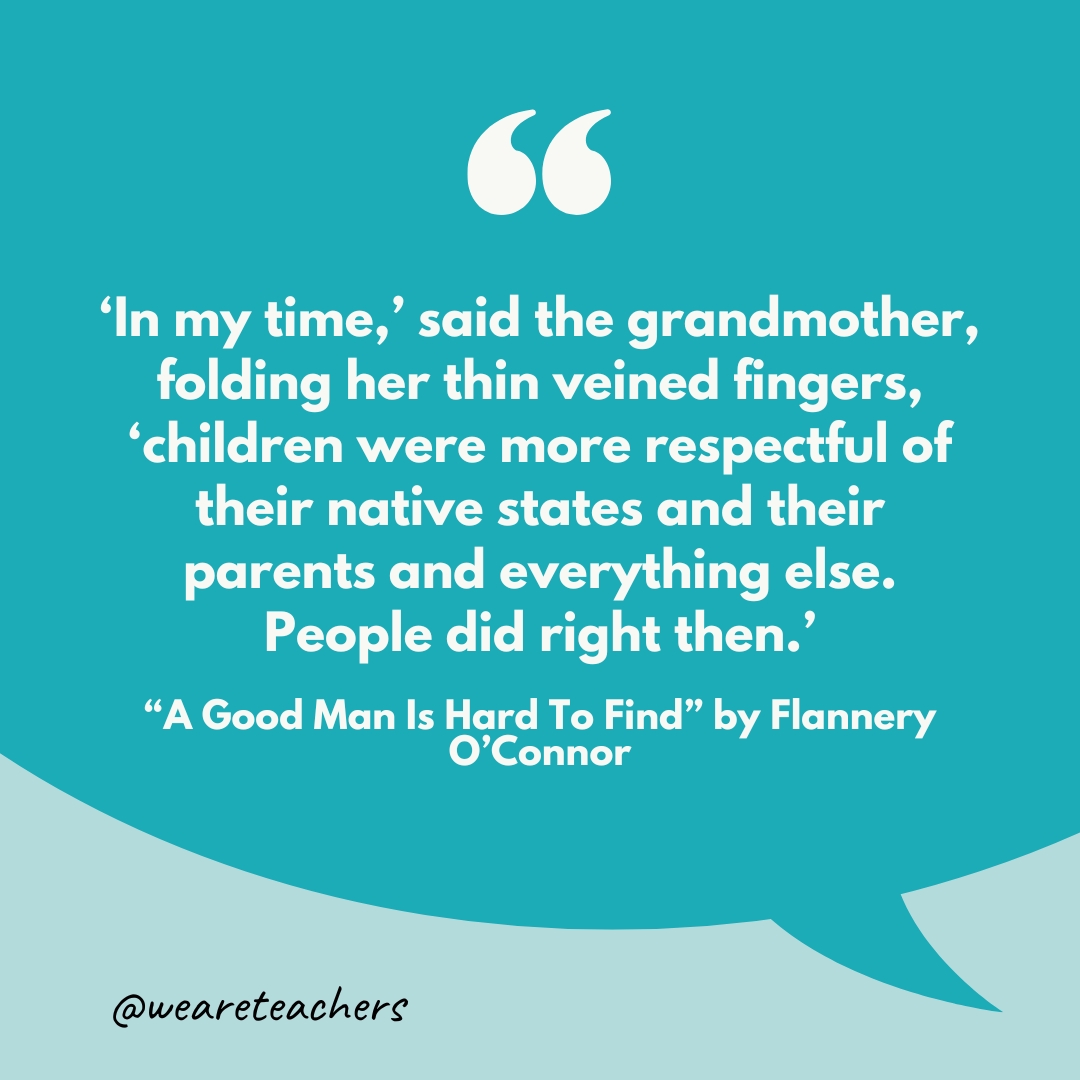
Why I love this: It really freaks out the kids when the grandmother meets her match in a twist that we see coming just in time to really feel the horror. If you’re looking for short stories that are engaging and rich for character study, this is the one for middle schoolers.
48. “Eleven” by Sandra Cisneros
“You open your eyes and everything’s just like yesterday, only it’s today. And you don’t feel eleven at all. You feel like you’re still ten. And you are—underneath the year that makes you eleven.”
Why I love this: It’s an elegant work of fiction with poetic devices. And it’s adorable.
49. “Thank You, Ma’am” by Langston Hughes
“It was about eleven o’clock at night, and she was walking alone, when a boy ran up behind her and tried to snatch her purse. The strap broke with the single tug the boy gave it from behind.”
Why I love this: It’s an example of an important lesson taught with firm grace and compassion. The beautiful characterization makes it a great text to study for technique.
50. “Valediction” by Sherman Alexie
“The next morning, we met up before school, and vowed to never do it again. One time was kind of innocent, but more than that would be criminal. But after practice that night, we did it again. Then again the day after that. We shoplifted for a week.”
Why I love this: Few writers do coming-of-age stories these days better than Alexie, and this has a solid lesson.
51. “Girl” by Jamaica Kincaid
“Wash the white clothes on Monday and put them on the stone heap; wash the color clothes on Tuesday and put them on the clothesline to dry; don’t walk bare-head in the hot sun; cook pumpkin fritters in very hot sweet oil …”
Why I love this: It’s unconventional and accessible at the same time. I love exposing students to different types of narratives, because it really helps them extend their creative ideas.
52. “When I Lay My Burden Down” by Maya Angelou
“I remember never believing that whites were really real.”
Why I love this: The narrative takes the ordinary American perspective and turns it on its head like only Ms. Angelou could do.
53. “All Summer in a Day” by Ray Bradbury
“It had been raining for seven years; thousands upon thousands of days compounded and filled from one end to the other with rain, with the drum and gush of water, with the sweet crystal fall of showers and the concussion of storms so heavy they were tidal waves come over the islands.”
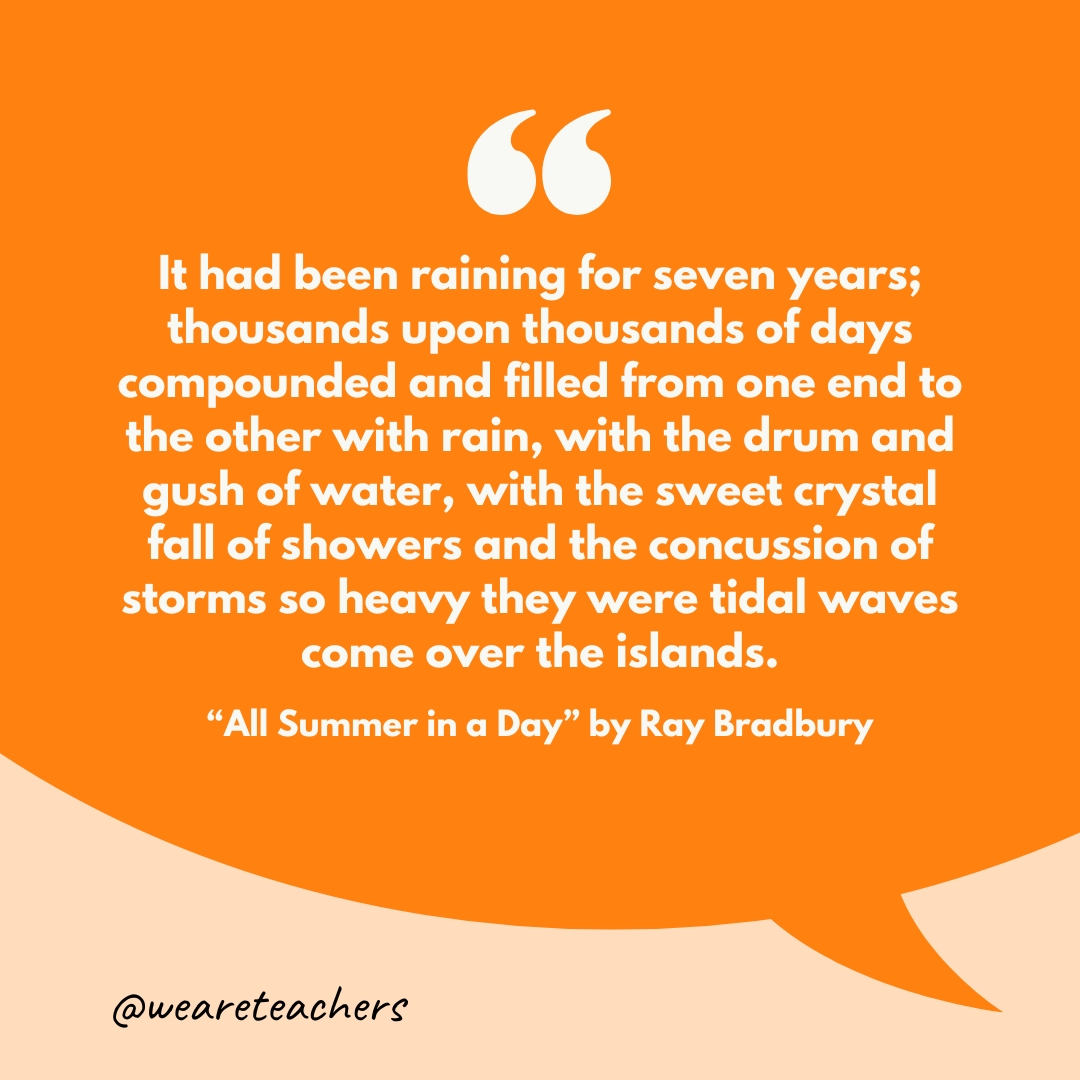
Why I love this: You can align it to events in American history when it was written. In addition, you can use it to help students imagine their own versions of the future.
54. “The Medicine Bag” by Virginia Driving Hawk Sneve
“I watched the group as it slowly came closer and saw that in the center of the strange procession was a man wearing a tall black hat. He’d pause now and then to peer at something in his hand and then at the houses on either side of the street. I felt cold and hot at the same time as I recognized the man. ‘Oh, no!’ I whispered. ‘It’s Grandpa!’”
Why I love this: Short stories for middle schoolers that highlight the wisdom and experience of elders are always welcome in my classroom.
55. “St. Lucy’s Home for Girls Raised by Wolves” by Karen Russell
“We’d arrived at St. Lucy’s this morning, part of a pack fifteen-strong. We were accompanied by a mousy, nervous-smelling social worker, the baby-faced deacon, Bartholomew the blue wolfhound, and four burly woodsmen.”
Why I love this: Great literature about werewolves is a joy to teach.
56. “Sweat” by Zora Neale Hurston
“Delia’s habitual meekness seemed to slip from her shoulders like a blown scarf. She was on her feet; her poor little body, her bare knuckly hands bravely defying the strapping hulk before her.”
Why I love this: It’s for more advanced readers, and the dialect means it’s for culturally sensitive teachers in positive learning environments. But it’s an essential text.
57. “Mother and Daughter” by Gary Soto
“Yollie’s mother, Mrs. Moreno, was a large woman who wore a muu-muu and butterfly-shaped glasses. She liked to water her lawn in the evening and wave at low-riders, who would stare at her behind their smoky sunglasses and laugh.”
Why I love this: It causes students to examine their relationships with family.
58. “The Tell-Tale Heart” by Edgar Allan Poe
“If still you think me mad, you will think so no longer when I describe the wise precautions I took for the concealment of the body. The night waned, and I worked hastily, but in silence. First of all I dismembered the corpse. I cut off the head and the arms and the legs.”
Why I love this: It has a ghost story with an unreliable narrator, terrifying action, and no ghost.
59. “The Hitchhiker” by Lucille Fletcher
“I was born in Brooklyn. All this I know. I know I’m at this moment perfectly sane, that it is not me that’s gone mad, but something else, something utterly beyond my control.”
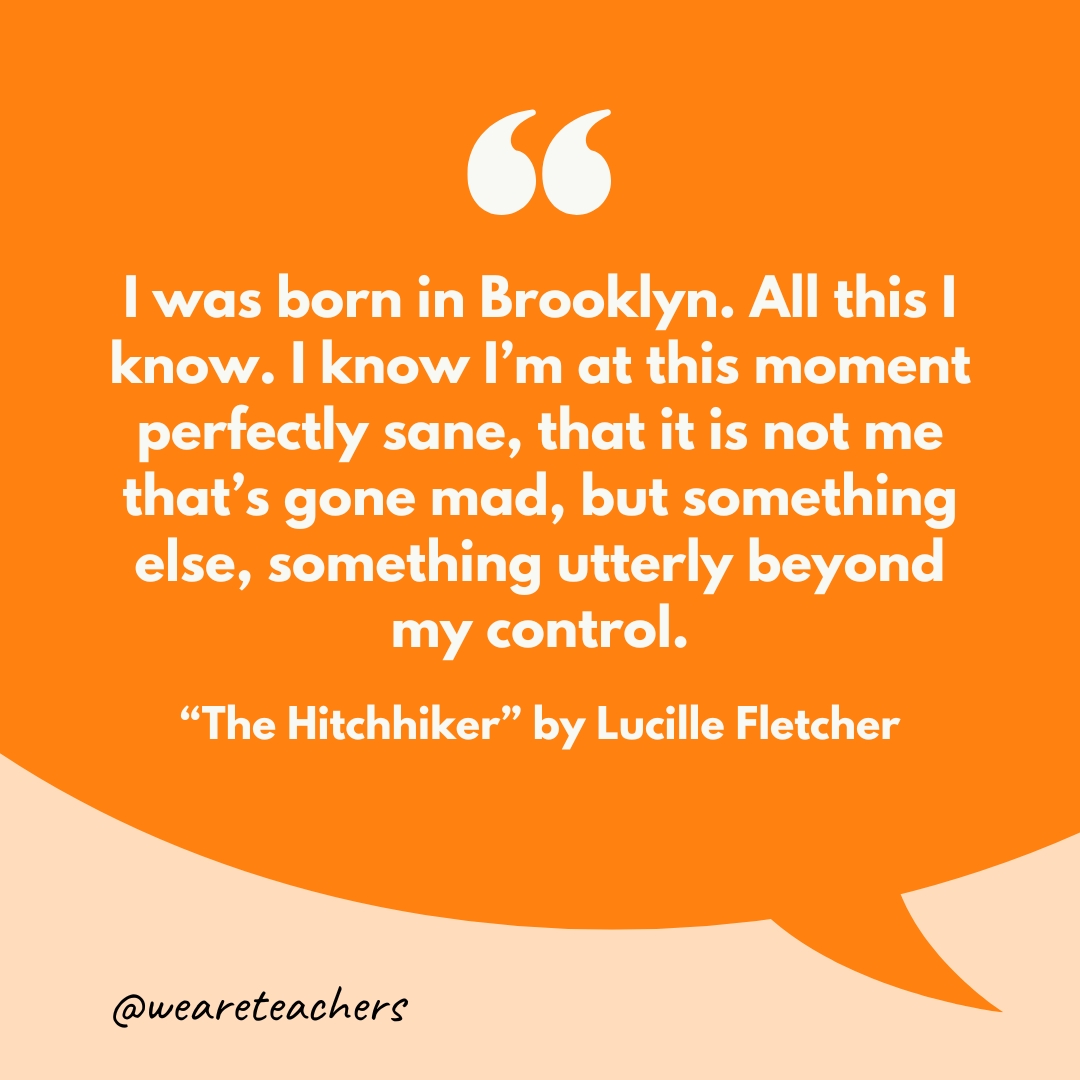
Why I love this: It’s fun to perform in class. Also, you can pair this with the Twilight Zone version to analyze craft and perspective.
60. “The Landlady” by Roald Dahl
“He walked briskly down the street. He was trying to do everything briskly these days. Briskness, he had decided, was the one common characteristic of all successful businessmen.”
Why I love this: I get the chills just thinking about this story. Students love that too.
61. “The Smallest Dragonboy” by Anne McCaffrey
“Dragonriders, even if they were still only hopeful candidates for the glowing eggs which were hardening on the hot sands of the Hatching Ground cavern, were expected to be punctual and prepared.”
Why I love this: It’s simply a beautiful story, and kids love the fantasy/sci-fi motifs.
62. “The Scarlet Ibis” by James Hurst
“It was I who renamed him. When he crawled, he crawled backwards, as if he were in reverse and couldn’t change gears. If you called him, he’d turn around as if he were going in the other direction, then he’d back right up to you to be picked up. Crawling backward made him look like a doodlebug, so I began to call him Doodle.”
Why I love this: It’s one of those short stories for middle schoolers that’s straight-up heartbreaking, so be prepared for that, but it’s also rich with symbolism and character development.
63. “My First Free Summer” by Julia Alvarez
“I never had summer—I had summer school. First grade, summer school. Second grade, summer school. Thirdgradesummerschoolfourthgradesummerschool. In fifth grade, I vowed I would get interested in fractions, the presidents of the United States, Mesopotamia; I would learn my English.”
Why I love this: It’s Julia Alvarez, which means the kids don’t even realize they’re reading. In fact, they’re just experiencing her point of view, which is always engaging.
64. “The Lottery” by Shirley Jackson
“The lottery was conducted—as were the square dances, the teen club, the Halloween program—by Mr. Summers, who had time and energy to devote to civic activities. He was a round-faced, jovial man and he ran the coal business, and people were sorry for him because he had no children and his wife was a scold.”
Why I love this: It connects to familiar dystopian stories, and it sharpens reading skills.
65. “The Gift of the Magi” by O. Henry
“One dollar and eighty-seven cents. That was all. And sixty cents of it was in pennies. Pennies saved one and two at a time by bulldozing the grocer and the vegetable man and the butcher until one’s cheeks burned with the silent imputation of parsimony that such close dealing implied. Three times Della counted it. One dollar and eighty-seven cents. And the next day would be Christmas.”
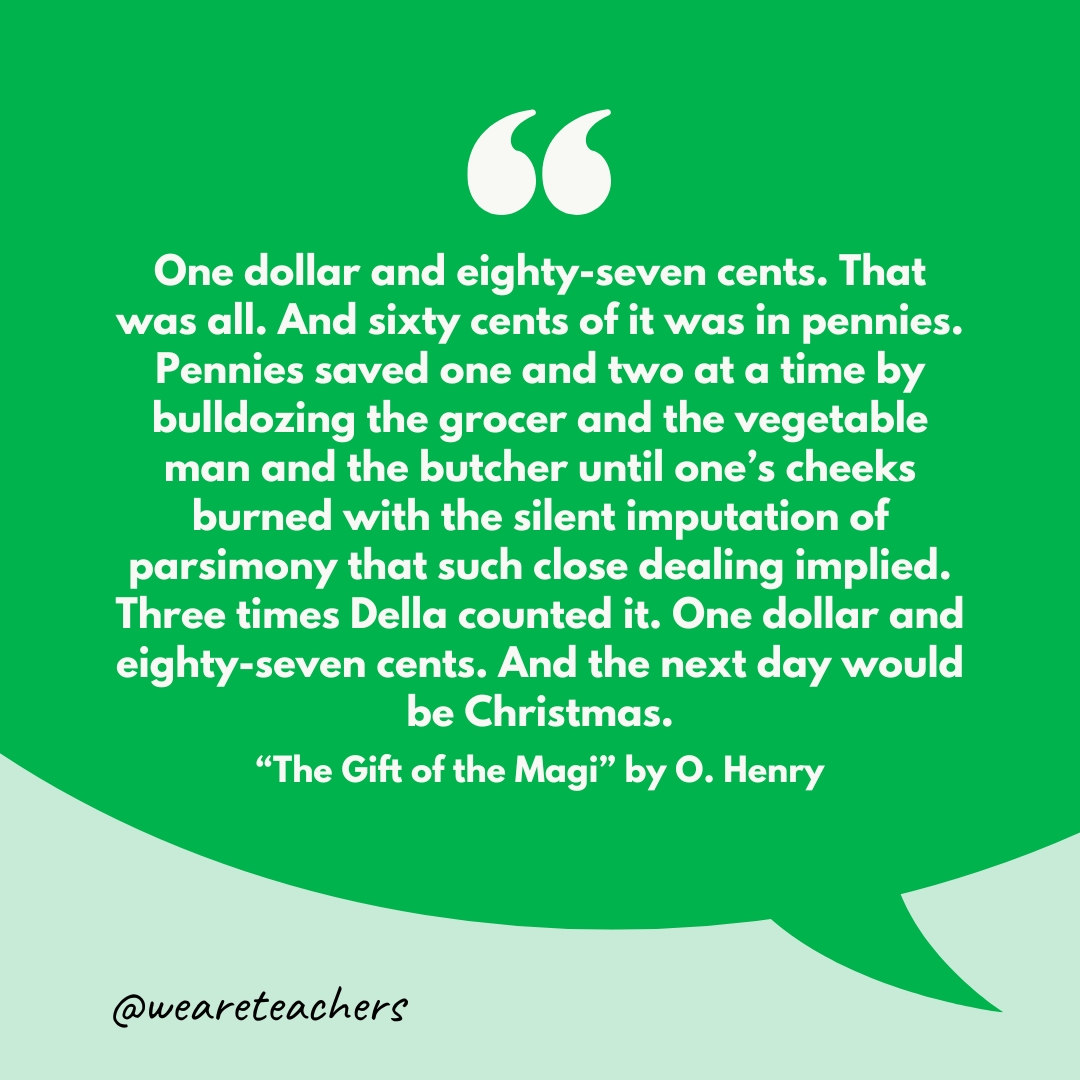
Why I love this: It’s a classic story students can rewrite their own updates for.
66. “The Gold Cadillac” by Mildred Taylor
“‘We got us a Cadillac! We got us a Cadillac!’ Wilma and I proclaimed in unison.”
Why I love this: The idea of cars as status symbols is immediately familiar to today’s students.
67. “Fish Cheeks” by Amy Tan
“When I found out that my parents had invited the minister’s family over for Christmas Eve dinner, I cried. What would Robert think of our shabby Chinese Christmas? What would he think of our noisy Chinese relatives who lacked proper American manners?”
Why I love this: Point of view matters in short stories for middle schoolers.
68. “The Most Dangerous Game” by Richard Connell
“An abrupt sound startled him. Off to the right he heard it, and his ears, expert in such matters, could not be mistaken. Again he heard the sound, and again. Somewhere, off in the blackness, someone had fired a gun three times.”
Why I love this: You know the story. Aside from its twisted morals, it offers an example in building plot tension.
69. “Sol Painting, Inc.” by Meg Medina
“Papi and I have a long-term business plan. I’m going to take over his company one day and turn it into an empire. Home Depot will eat my dust. I’ve already designed my business cards. They’ve got a sun rising and fancy gold letters: MERCI SUAREZ, CEO, SOL PAINTING, INC.”
Why I love this: It appeals to many students for whom so much of our content lacks relevance. In addition, the narrator’s voice is so compelling.
70. “Main Street” by Jacqueline Woodson
“As I watched (the plow), pressing against the window, I said to my father, ‘I want to move through the world that quietly, that powerfully.’”
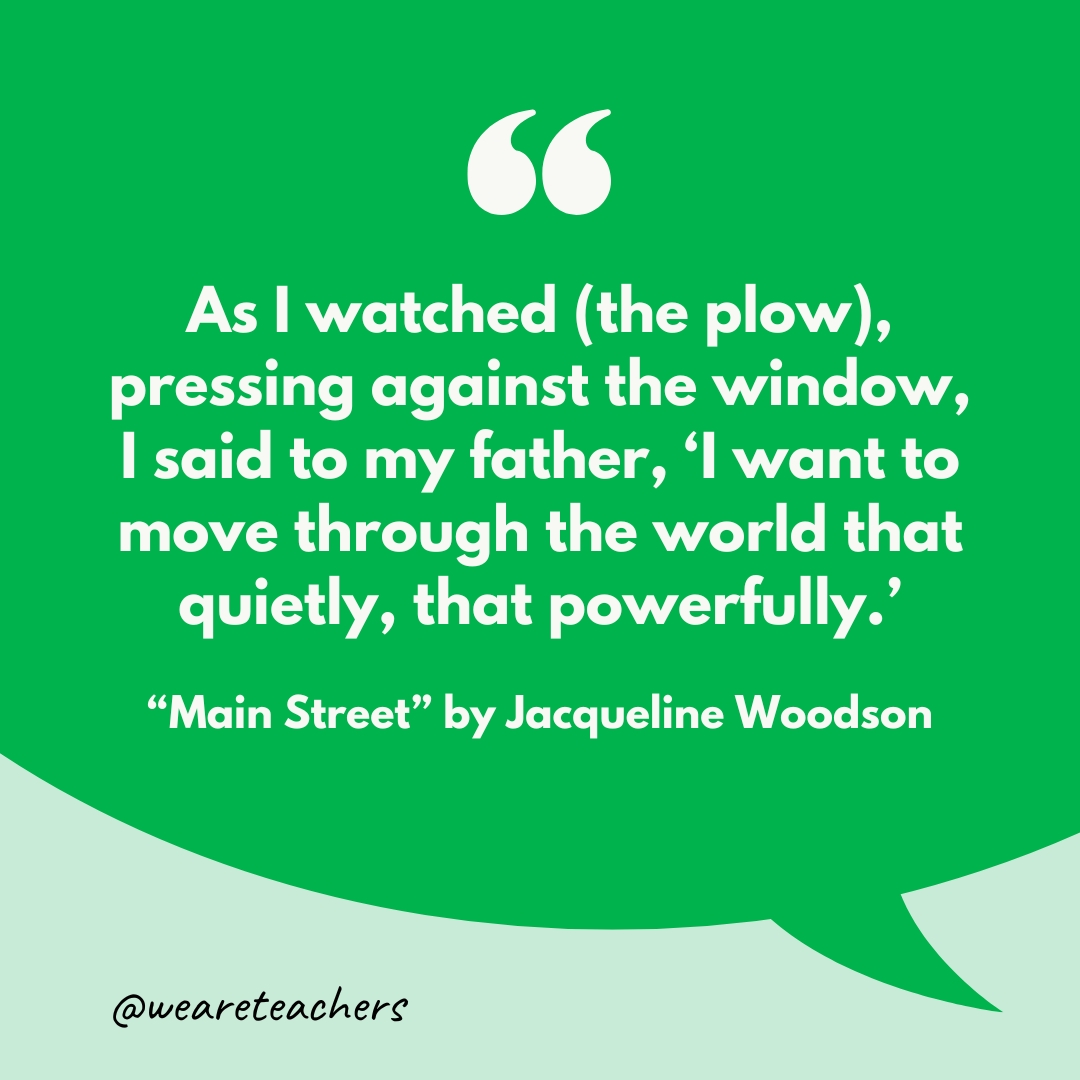
Why I love this: It works as a close-read text. In addition, it’s a profoundly well-developed story.
71. “Raymond’s Run” by Toni Cade Bambara
“I don’t have much work to do around the house like some girls. My mother does that. And I don’t have to earn my pocket money by hustling; George runs errands for the big boys and sells Christmas cards. And anything else that’s got to get done, my father does. All I have to do in life is mind my brother Raymond, which is enough.”
Why I love this: Middle school students know what it means to stand by your family, and this story leads to great conversations about theme.
72. “The Ones Who Walk Away From Omelas” by Ursula Le Guin
“Do you believe? Do you accept the festival, the city, the joy? No? Then let me describe one more thing.”
Why I love this: It’s more of a proposition than a story. As a result, students can explore meaning and consider the ethical questions Le Guin raises.
73. “What’s the Worst That Could Happen?” by Bruce Coville
“If thirteen is supposed to be an unlucky number, what does it mean that we are forced to go through an entire year with that as our age? I mean, you would think a civilized society could just come up with a way for us to skip it.”
Why I love this: What’s not to love about awkward teenage experiences?
74. “The Monkey’s Paw” by William Wymark Jacobs
“He took something out of his pocket and held it out for them. Mrs. White drew back with a look of disgust, but her son, taking it, examined it curiously.”
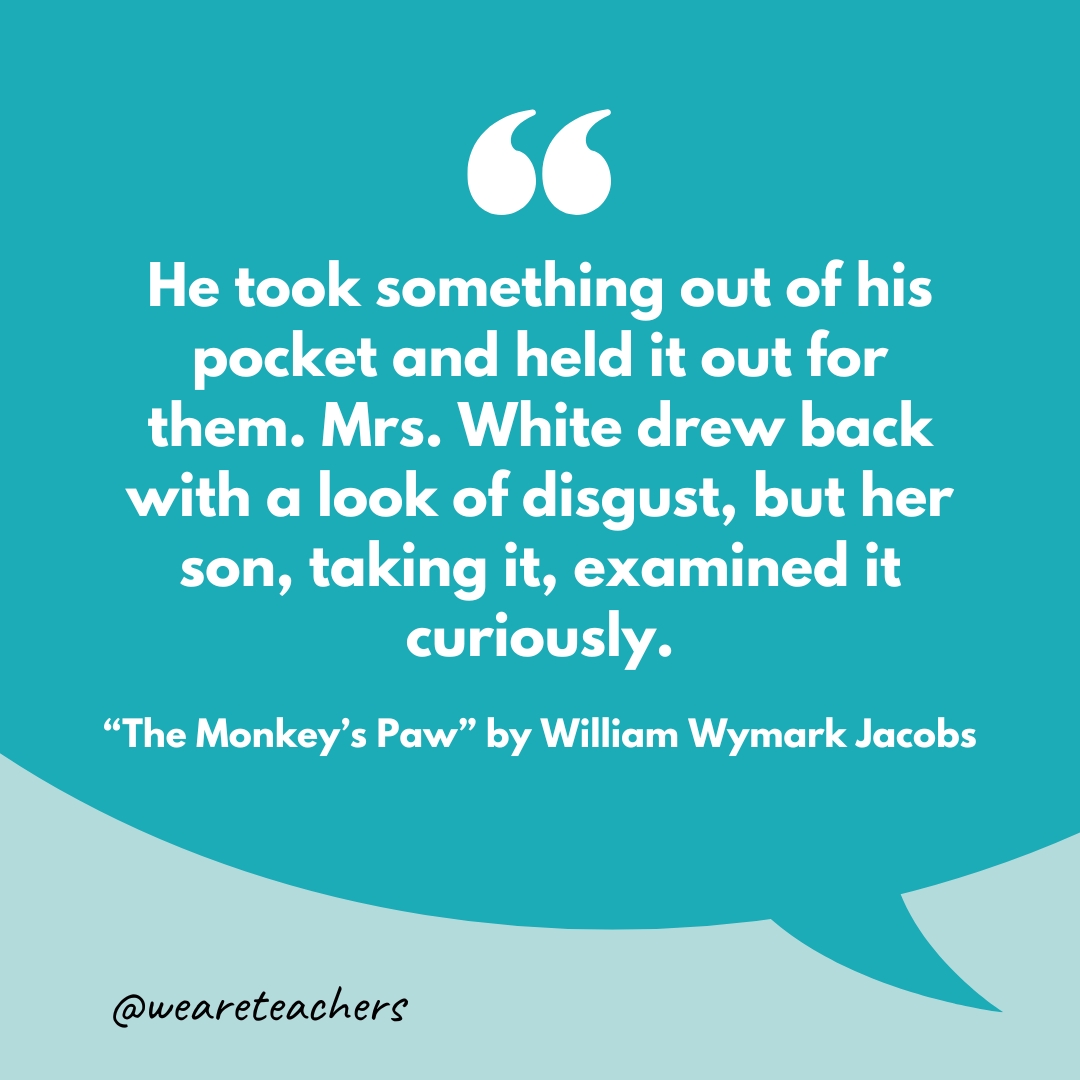
Why I love this: It’s an important lesson, and the dialogue-driven text is engaging for students.
75. “The Boo Hag” by Veronica Byrd
“But Emmet had his eyes set on a beautifully mysterious young woman who lived alone in a small cabin deep in the marsh. She was incredibly beautiful, with long dark hair, smooth skin and piercing green eyes. But word around town was that she was a little strange, and it was best to stay away from her.”
Why I love this: It connects short stories with the tradition of oral storytelling.
Searching for more short stories for middle schoolers?
Check out these recommendations for short stories middle schoolers will love compiled by the Seattle Public Library, the Short Story Guide, and Barnes & Noble.
Plus, we love these anthologies that include short stories for middle schoolers: A Thousand Beginnings and Endings compiled by We Need Diverse Books’ Ellen Oh and Elsie Chapman, and Meet Cute: Some People Are Destined To Meet by Jennifer Armentrout, Nicola Yoon, Ibi Zoboi, et al.
If you like these short stories for middle schoolers, don’t miss our list of favorite middle school poems too.
Want more articles like this? Be sure to subscribe to our newsletters to find out when they’re posted!
